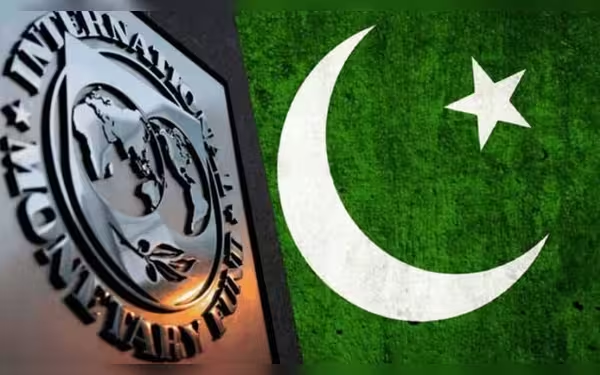Saturday, November 16, 2024 09:48 PM
New IMF Facility for Pakistan: A Temporary Solution?
- New IMF facility raises concerns over long-term sustainability.
- Pakistan's economy remains vulnerable to external shocks.
- Structural reforms are essential for genuine economic growth.
 Image Credits: tribune.com.pk
Image Credits: tribune.com.pkThe new IMF facility for Pakistan raises questions about long-term economic stability and the need for structural reforms.
The recent announcement of a new International Monetary Fund (IMF) facility for Pakistan has sparked discussions across the nation. This facility is intended to provide financial support to help stabilize the economy, which has been facing numerous challenges. However, many experts are questioning whether this approach will yield the desired results or if it is merely a temporary fix.
Pakistan's economy is heavily reliant on imports, which makes it particularly vulnerable to external shocks. The measures proposed under the new IMF facility, while aimed at addressing immediate financial needs, may not be sustainable in the long run. As the country grapples with high inflation and a depreciating currency, the structural economic constraints that have plagued it for years remain largely unaddressed.
Critics argue that without tackling these underlying issues, the country may find itself in a similar situation in just a few years. The cycle of seeking assistance from the IMF could continue, leading to a dependency that stifles genuine economic growth. It is essential for policymakers to focus on implementing structural reforms that promote self-sufficiency and resilience in the economy.
Moreover, the reliance on external financial support can create a sense of complacency among local leaders. Instead of fostering innovation and encouraging local industries, there is a risk that the government may prioritize short-term solutions over long-term strategies. This could hinder the development of a robust economic framework that is capable of withstanding global economic fluctuations.
While the new IMF facility may provide a temporary lifeline for Pakistan, it is crucial for the government to recognize that true economic stability requires more than just financial aid. Addressing the structural constraints and fostering a culture of self-reliance will be key to ensuring that the country does not find itself in the same predicament three years down the line. The path to sustainable growth is challenging, but with the right policies and commitment, it is achievable.













